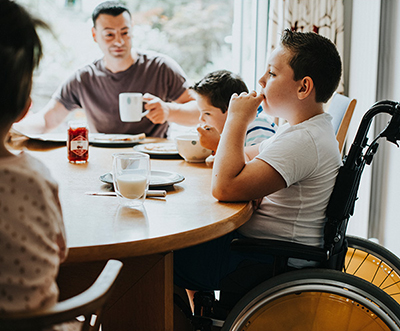
NICHD research aims to prevent and treat a variety of diseases and conditions that affect infants, children, and adolescents.
Spina bifida is a condition in which the spinal column fails to close around the spinal cord. The most serious form is called myelomeningocele, where the spinal cord protrudes through an opening in the spine, blocks the flow of spinal fluid, and pulls the brain into the base of the skull. An NICHD-supported study found that the benefits of fetal surgery to treat myelomeningocele persisted through school age. The researchers reported that children as young as 6 years old who underwent fetal surgery were more likely to walk independently and have fewer follow-up surgeries when compared to children who had traditional corrective surgery after birth. The results provide important information for physicians and families who are considering prenatal surgery.
Thanks to NICHD-supported research, drug labels for doxycycline, clindamycin, and caffeine citrate now include better information for healthcare providers on recommended usage and dosage in pediatric populations. Doctors routinely make off-label drug decisions when treating infants and children because many drugs lack pediatric safety or dosage recommendations. The Best Pharmaceuticals for Children Act Program at NICHD supports research to update drug labels so that healthcare providers have clear guidance on how to prescribe drugs for their youngest patients.
Finally, NICHD researchers found that the drug miglustat can help stabilize the swallowing problems that occur in children and adolescents with Niemann-Pick type C1 (NPC1), a rare and ultimately fatal disease that causes progressive decline in neurological and cognitive functions. People with the disease, including young children, lose the ability to walk, talk, and eat. Swallowing disorders can increase a patient’s risk of pneumonia caused by aspiration—the inhaling of food or drink—which unfortunately contributes to the deaths of people with NPC1. The researchers found that patients who took the drug had a 91% lower risk for deterioration in swallowing and a 72% lower risk for getting food or drink in the airway.
 BACK TO TOP
BACK TO TOP